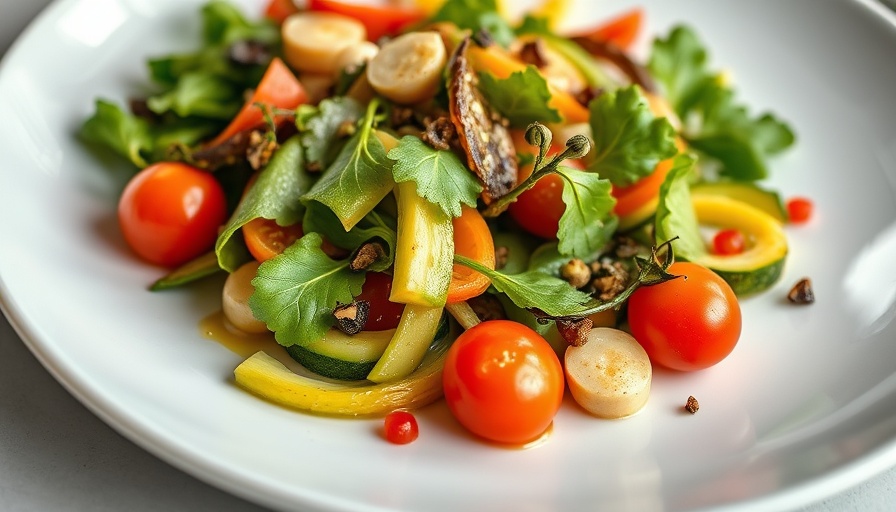
Is This the Future of Vegetarian Michelin Star Dining?
Maître-sommelier Valentijn van Urk is passionately committed to his vision of opening a vegetarian restaurant that could potentially earn a Michelin star within the next few months. With solid experience in high-end dining and a burning desire to elevate vegetarian cuisine, Van Urk believes that he has the opportunity to change the culinary landscape in Utrecht.
Revolutionizing Vegetarian Cuisine
His restaurant concept focuses exclusively on vegetarian options, refusing to compromise by serving meat or fish. As he remarked, “We’re going to storm the market,” a sentiment that underscores his ambition. Van Urk aims to realize this dream by the end of the year, positioning his establishment as a unique dining experience that offers a delectable seven-course meal for €85—a stark contrast to the typical Michelin-star menu price range.
The Appeal of Affordable Gourmet Dining
Valentijn's approach reflects a rising trend in gastronomy, where diners are increasingly aware of the values surrounding sustainable eating. He highlights a troubling aspect of high-end vegetarian dining: the growing disparity in pricing between vegetarian and traditional meat-based menus. According to him, it’s bizarre to see a vegetarian meal priced comparably to its non-vegetarian counterpart, especially when the cost of ingredients can be notably lower.
A Personal Journey to Vegetarianism
Interestingly, Van Urk himself transitioned to vegetarianism only five years ago, having previously consumed meat. He attributes his dietary shift to a long history within the food industry and a father's influence, who faced criticism for his plant-based choices long before they were in vogue. Van Urk reflects on how perceptions around vegetarianism have evolved, asserting that “the transition from meatballs to tofu is happening too quickly,” emphasizing the need for delicious vegetarian dishes that satisfy a hungry palate.
How This Affects the Culinary Scene in the Netherlands
Despite the increasing desire for plant-based options, Van Urk observes that the Netherlands lacks a dedicated vegetarian Michelin-star restaurant, while cities such as Berlin and London have embraced this niche. He speculates that many established restaurants fear alienating their traditional clientele by excluding meat from their menus. His goal is to challenge this status quo by providing an outstanding vegetarian experience that could entice even the most devoted meat-eaters.
Exciting Expectations for the New Restaurant
Looking ahead, Van Urk envisions offering 30 to 40 seats in his restaurant, consciously limiting capacity to ensure attentive service. His ambition is to attract around 100 customers weekly in the opening year, creating an inviting and luxurious ambiance focused on unforgettable flavors and experiences. This broadens the appeal of vegetarian dining and aims to inspire more people to explore plant-based options in their diets.
As the culinary world evolves, initiatives like Van Urk's spotlight the increasing sodium of “plant-forward” dining—where meat is no longer the protagonist on the plate. With his visionary approach and commitment to exceptional quality, is this the direction Michelin-star dining needs to rejuvenate the culinary scene, particularly for vegetarian fare?
The buzz around Valentijn van Urk’s upcoming restaurant is just the beginning of a broader conversation about the future of vegetarian dining in the Netherlands. If this venture inspires even a handful of people to reconsider their dietary choices, it will undoubtedly have a lasting impact on how we perceive vegetarian cuisine.
 Rij toevoegen
Rij toevoegen






Write A Comment